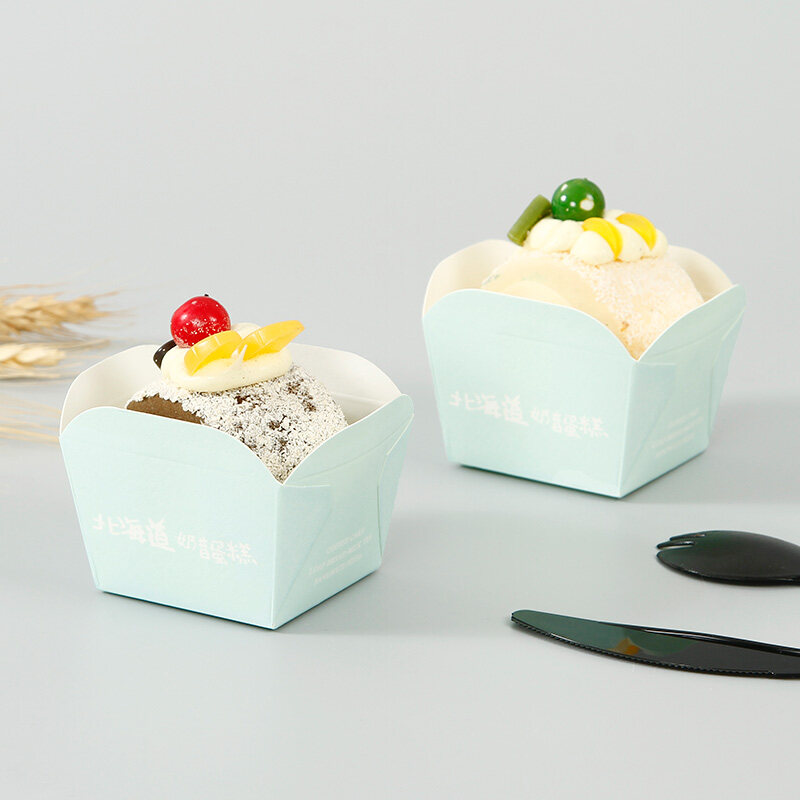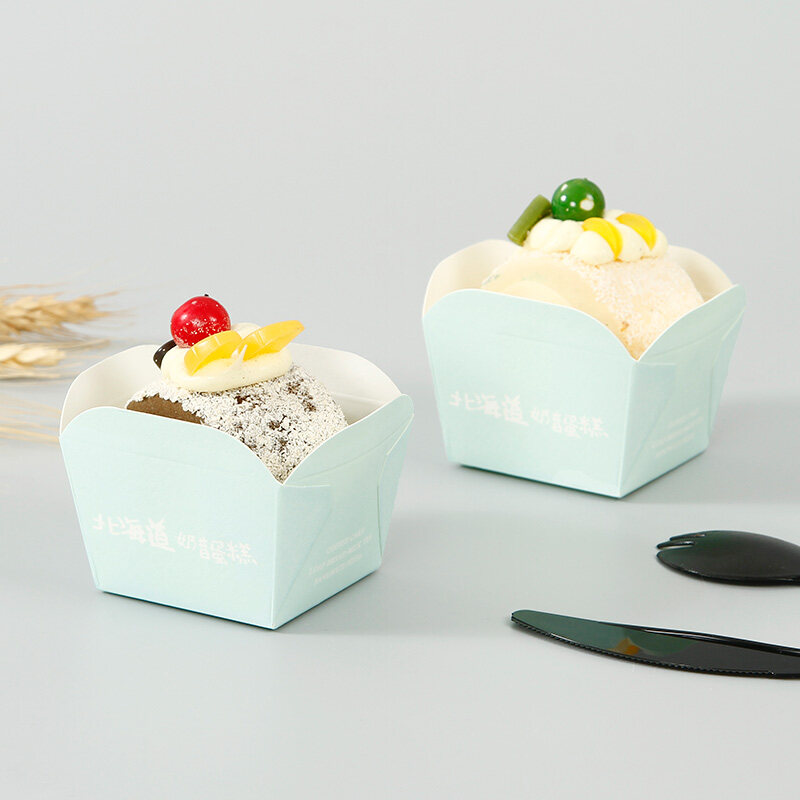Email format error
Email cannot be empty
Email already exists
6-20 characters(letters plus numbers only)
The password is inconsistent
Email format error
Email cannot be empty
Email does not exist
6-20 characters(letters plus numbers only)
The password is inconsistent


In the world of baking and confectionery, the humble cake box is an often overlooked but essential component. Not only does it play a crucial role in preserving the quality of the cake, but it also reflects on the brand’s commitment to sustainability. This article delves into the materials used in cake boxes, the benefits of biodegradable and recyclable options, and how these choices impact both durability and the environment. We also explore proper storage and transport techniques, the evolution of cake boxes, and considerations for special dietary cakes, all while highlighting the significance of "cake box wholesale" in shaping industry trends.
Common Materials Used in Cake Boxes
Cardboard
Cardboard is the most common material used in cake boxes, thanks to its cost-effectiveness and ease of customization. It’s a popular choice for both single-tier and multi-tier cakes. Cardboard boxes are lightweight and can be designed to fold flat, making them easy to store and transport. However, their durability can be a concern, especially when dealing with heavier or tiered cakes. While cardboard is recyclable, it may not always be the best option for maintaining freshness or protecting delicate designs.
Plastic
Plastic cake boxes offer superior durability compared to cardboard. They are water-resistant and can withstand the rigors of transportation without compromising the integrity of the cake. Plastic is also reusable, which can be an advantage for environmentally conscious consumers. However, plastic has its environmental downsides, including its contribution to plastic pollution and challenges in recycling. This makes it less favorable in the long-term sustainability context.
Eco-Friendly Options
As sustainability becomes a priority, many cake box manufacturers are turning to eco-friendly materials. These include recycled cardboard, biodegradable plastics, and compostable materials. Recycled cardboard is an excellent choice for reducing waste, while biodegradable plastics break down more quickly than traditional plastics, reducing their environmental footprint. Compostable materials, often made from plant fibers, offer a promising alternative that supports a circular economy.
The Benefits of Biodegradable or Recyclable Cake Boxes
Biodegradable Cake Boxes
Biodegradable cake boxes are designed to break down naturally over time, reducing their environmental impact. These boxes are typically made from materials like cornstarch or sugarcane bagasse, which decompose more easily than traditional plastics. The benefits of biodegradable cake boxes include a significant reduction in landfill waste and a lower overall carbon footprint. They are particularly well-suited for single-use applications and can be a great choice for eco-conscious consumers.
Recyclable Cake Boxes
Recyclable cake boxes are made from materials that can be processed and reused to create new products. Cardboard is the most common recyclable material, and many manufacturers are now incorporating recycled content into their boxes. Recycling reduces the need for virgin materials, thereby conserving resources and reducing environmental impact. However, for recycling to be effective, consumers must properly dispose of their cake boxes and ensure they are free from contaminants.
Comparing Durability and Environmental Impact
Durability
When comparing durability, plastic cake boxes generally outperform cardboard and eco-friendly options. They are less likely to collapse or tear, making them suitable for transporting delicate or tiered cakes. However, advancements in eco-friendly materials are improving their durability, making them more competitive. For businesses and consumers who prioritize both durability and sustainability, choosing a high-quality eco-friendly option can offer a balance between strength and environmental responsibility.
Environmental Impact
The environmental impact of cake boxes varies greatly depending on the material used. Cardboard, while recyclable, may not always be the most eco-friendly option if not properly disposed of. Plastic boxes, though durable, contribute to plastic pollution and are less favorable in terms of sustainability. Eco-friendly materials, such as biodegradable and compostable options, offer a reduced environmental impact and support sustainable practices. Businesses that opt for these materials demonstrate a commitment to reducing their ecological footprint and can appeal to environmentally conscious customers.

How to Properly Store and Transport Cakes Using Cake Boxes
Tips for Keeping Cakes Fresh During Transport
Maintaining the freshness of a cake during transport is crucial, and the right cake box plays a significant role in this process. Proper sealing is essential; a well-sealed cake box prevents air from drying out the cake and protects it from external contaminants. Temperature control is also important, especially for cakes with perishable ingredients. Using insulated or refrigerated transport options can help maintain the cake's quality until it reaches its destination.
The Importance of Cake Box Size and Structure for Different Types of Cakes
Selecting the appropriate cake box size and structure is vital for ensuring that the cake is well-supported and protected. A cake box that is too small can cause the cake to become damaged, while one that is too large may result in movement and potential shifting. Reinforced boxes with sturdy bases and sides are ideal for tiered cakes, as they provide additional support and stability. Ensuring that the box is the right size for the cake helps prevent issues like collapsing or smudging.
Avoiding Common Issues Like Smudging or Collapsing
To avoid smudging, use protective layers such as parchment paper or cake boards inside the box. These layers prevent the cake from coming into direct contact with the box, reducing the risk of smudging or sticking. For collapsing, ensure that the cake box is made from high-quality materials that can handle the weight and structure of the cake. Reinforced boxes with proper support structures can prevent collapse and maintain the cake’s presentation during transport.
The History and Evolution of Cake Boxes
A Brief History of Cake Packaging
The history of cake packaging dates back to early baking traditions, where cakes were transported in simple cloth wrappings or wooden boxes. As baking became more commercialized, the need for more effective packaging solutions grew. Early cake boxes were often made from basic cardboard and lacked the protective features we see today. Over time, advancements in materials and design led to the development of more sophisticated cake boxes that prioritize both functionality and aesthetics.
How Cake Boxes Have Evolved Over Time
The evolution of cake boxes reflects broader trends in packaging and consumer preferences. Early designs were functional but lacked in visual appeal. With the rise of branding and customization, cake boxes began to incorporate more decorative elements, such as custom prints and themed designs. Technological advancements have also played a role, with innovations in materials and manufacturing processes enhancing the durability and sustainability of cake boxes.
The Influence of Modern Packaging Innovations
Modern packaging innovations have transformed the cake box industry. Smart packaging technologies, such as temperature-controlled boxes and QR codes for tracking, are becoming more common. These innovations not only improve the functionality of cake boxes but also offer new opportunities for branding and customer engagement. Customization options have expanded, allowing businesses to create unique and memorable packaging experiences for their customers.
Conclusion
Choosing the right cake box involves balancing durability, sustainability, and functionality. As the industry evolves, so too do the materials and designs used in cake packaging. From traditional cardboard to innovative eco-friendly options, the selection of cake boxes reflects broader trends in environmental responsibility and consumer preferences. Proper storage and transport techniques ensure that cakes remain fresh and undamaged, while the evolution of cake boxes showcases advancements in packaging technology and design. For businesses and consumers alike, investing in high-quality, sustainable cake boxes not only benefits the environment but also enhances the overall experience of enjoying a beautifully presented cake.